
It is with thanks to 'Tigger' & the staff at the E-on processing plant, now covering the main camp site, for the following aerial photographs. Taken in 1941, '45, '46, '47, '53 and '55 these photographs are an invaluable source of information, and for some, memories too.
Please click on one of the thumbnail images to view a specific photograph.
If you would like a larger version of the images , please call or e-mail me using the information on the contact page and I will arrange to send you a copy. Images shown here at a maximum of 800 pixels, original images are 3000 pixels
The first photograph above was taken on 13th March, 1941. The events described below took place on the evening before.
The extract below is from Cheshire Airfields of the Second World War by Aldon Ferguson.
During the conversion period, most operational patrols were flown with the Hurricane and it was one of these, which scored the squadron's first confirmed 'kill'. The night of the March 12th, 1941, saw an attack on Merseyside by 170 aircraft of Luftflotte 2 and 316 aircraft of Luftflotte 3. They deposited 303 tons of high explosives and over 1,982 incendiaries in nine waves between 8.30pm and 4am the following morning. The main weight of the attack fell on Birkenhead, Wallasey, Bootle, and Liverpool. An estimated 270 groups of incendiary bombs fell on the built-up area, starting more than 500 fires of which nine reached major proportions. A total of about 350 high explosive bombs and 60 parachute mines went off causing widespread damage. In the port area some machinery and dockside handling equipment was destroyed; two ships and a large floating crane were sunk and three further ships suffered damage. Three flour mills were damaged, the Vacuum Oil Company’s installation at Birkenhead was practically destroyed, and both gas holders at Wallasey were burnt out. There was extensive damage to residential property in this attack and a smaller one on the following night a total of 631 people were killed and a similar number injured.
One of the Pfadfinder (Pathfinder) aircraft on this attack was Heinkel He.111P-4 (works number 2989, coded G1+OP) from No.6 Staffel (Squadron) of Stab II/KG55 (Bomber Group). It took off from Avord, France en-route for Birkenhead under the command of Hauptmann (Flight Lieutenant) Wolfgang Berlin, the observer. The aircraft was piloted by Oberfedwebel (Flight Sergeant) Karl Single, with Unteroffizier (Corporal) Xavier Diem as wireless operator/gunner, Feldwebel (Sergeant) Leonhard Kutznik, flight mechanic/gunner and Feldwebel (Sergeant) Heinrich Ludwinski, gunner. Little anti-aircraft fire was encountered en-route and Berlin recalls that the weather was “fine and clear, a bright moon was lighting up all of southern England”.
On completing its bombing run over Birkenhead docks, the pilot turned for home. Flying at around 15,000 feet, the wireless operator reported that a night fighter was coming up from the lower rear. Second's later bullets ripped through the Heinkel; the first burst killing the gunner Ludwinski and flight mechanic Kutznik. The second and third bursts put both engines out of action. The Observer Corp watched the stricken aircraft flying up the River Dee from the direction of Hilbre Island. Berlin, ordered Diem, the radio operator to bale out. Diem was unable to open either of the two rear exits because of the damage inflicted by the fighter, so he crawled forward along the narrow passage passed the bomb bay to reach the cockpit. Berlin opened the front emergency exit, but by this time, they were down to about 3,000 feet and rapidly getting lower. Berlin, the pilot and radio operator jumped out. As they descended by parachute, they could see in the bright moonlight, men of the Parkgate Home Guard running towards them. They were captured soon after they landed and taken to Neston police station.
The aircraft that had shot them down, was a Hurricane V7752 piloted by Sgt Robin McNair of No 96 Squadron. He had taken off from Cranage to patrol Liverpool at 12,000 feet when he encountered the Heinkel. He closed to around 75 yards before commencing his attack with two four-second bursts. Oil from the bomber covered his windscreen but he pressed home more attacks on the bomber. The attack nearly turned to a disaster for McNair, because he almost got entangled in barrage balloon cables. Indeed, these barrage balloons saw the final destruction of the Heinkel which struck them as it came down causing the aircraft to slew round before it came to rest on what was the ICI recreation ground, Milton Road, Widnes, which is now the sports grounds of Fisher and More High School. McNair just made it back to Cranage after a 2 hour 40 minute sortie that left his fuel tanks almost dry. Hauptmann Berlin was taken to the nearby farmhouse and was led into the living room where a homely fire burned and he was provided with toast. Berlin was subsequently interrogated at Cockfosters, London by air intelligence staff before proceeding to a prisoner-of-war camp. He was later sent to Canada and repatriated to Germany in 1947.
 McNair went on to be awarded the DFC in 1942 and Bar in 1944. As an acting Wing Commander he is credited with blowing up Field Marshal Erwin Rommel (better known as the Desert Fox) in the battle of the Falaise Gap in 1944. He was then CO of No 247 Squadron flying Typhoons.
McNair went on to be awarded the DFC in 1942 and Bar in 1944. As an acting Wing Commander he is credited with blowing up Field Marshal Erwin Rommel (better known as the Desert Fox) in the battle of the Falaise Gap in 1944. He was then CO of No 247 Squadron flying Typhoons.
Retiring as a Squadron Leader he had always insisted that any German aircrew that he killed had a Mass said for them as soon as possible. He died in 1996 aged 78 and his son, Duncan, arranged a Mass of Remembrance to be held at St Michael’s RC Church, Widnes, on 21 November 1998 to celebrate the part his father played in the war in the North-West.
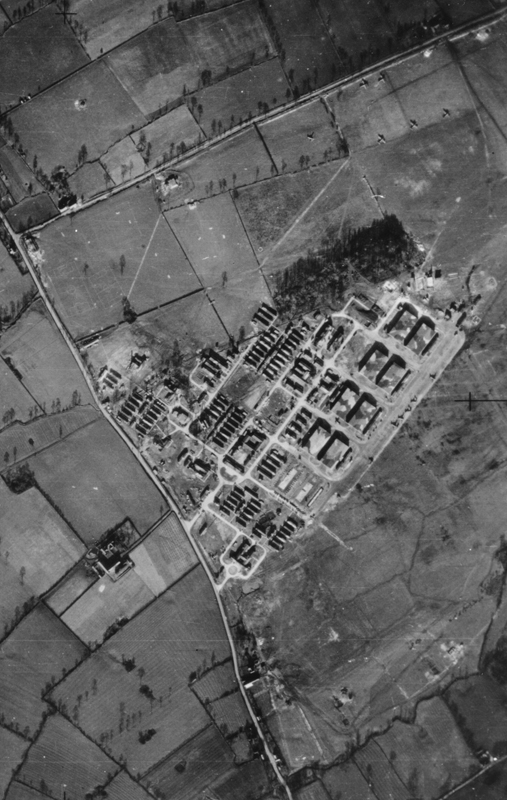
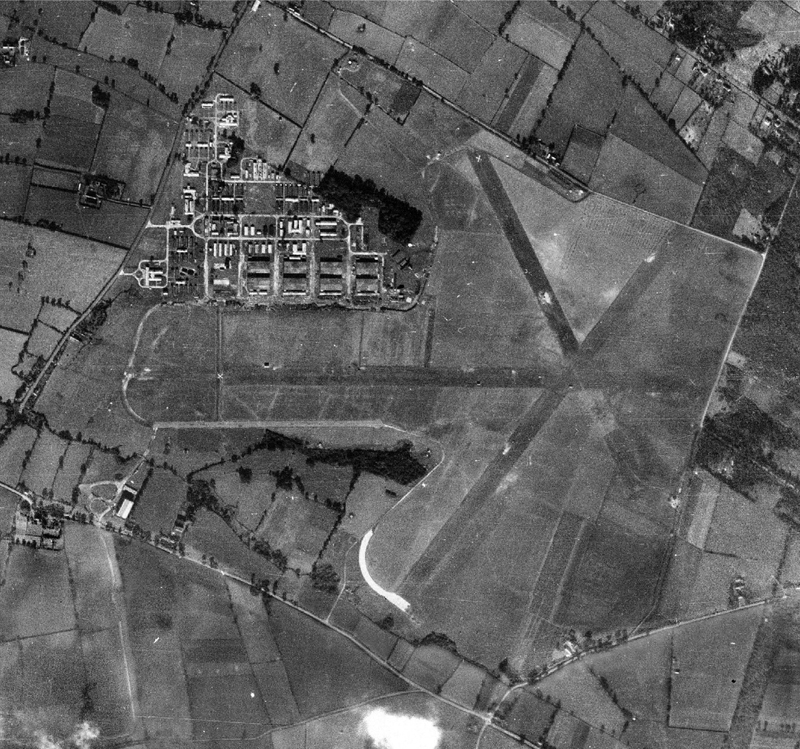
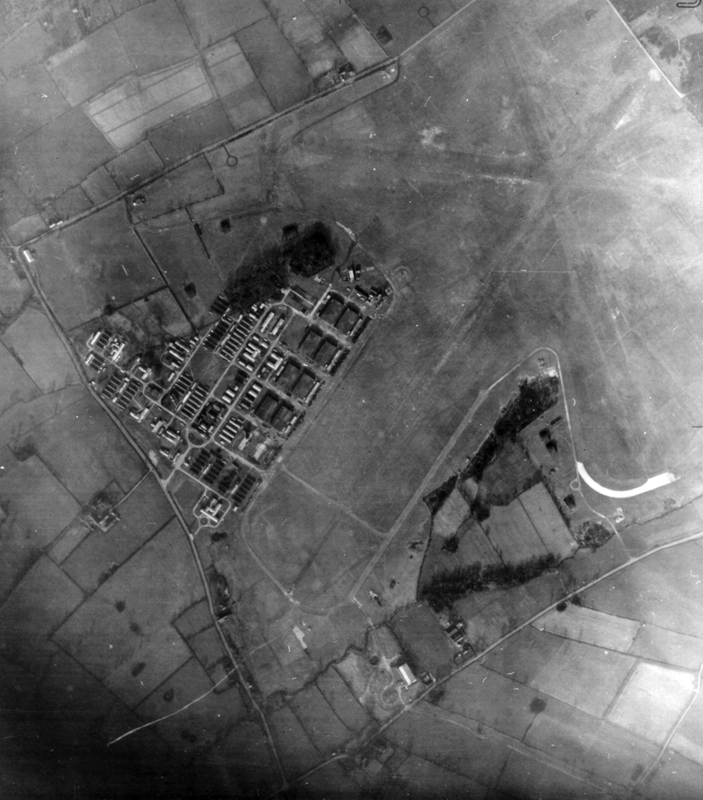
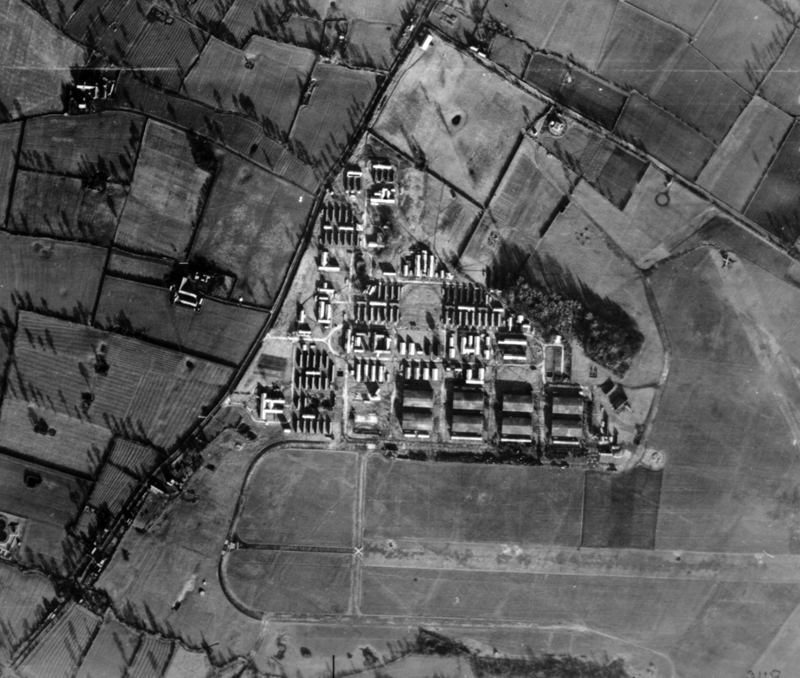
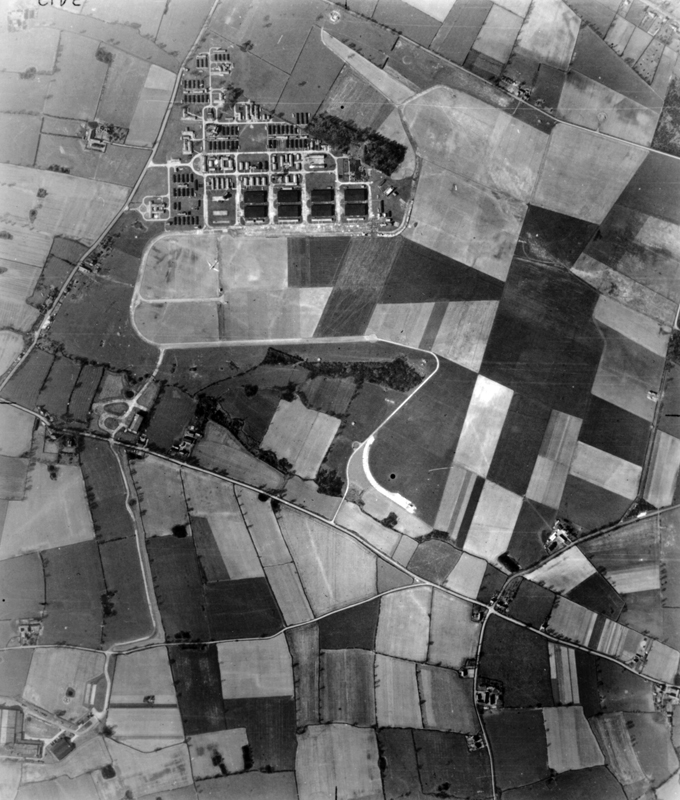
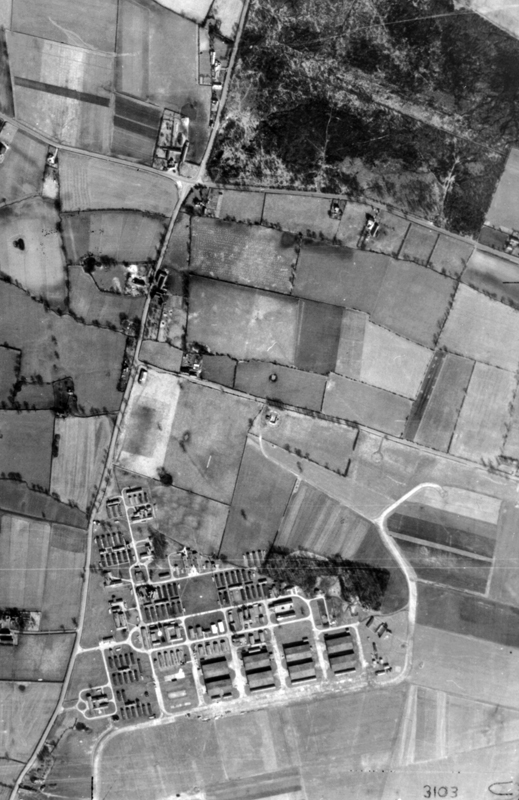
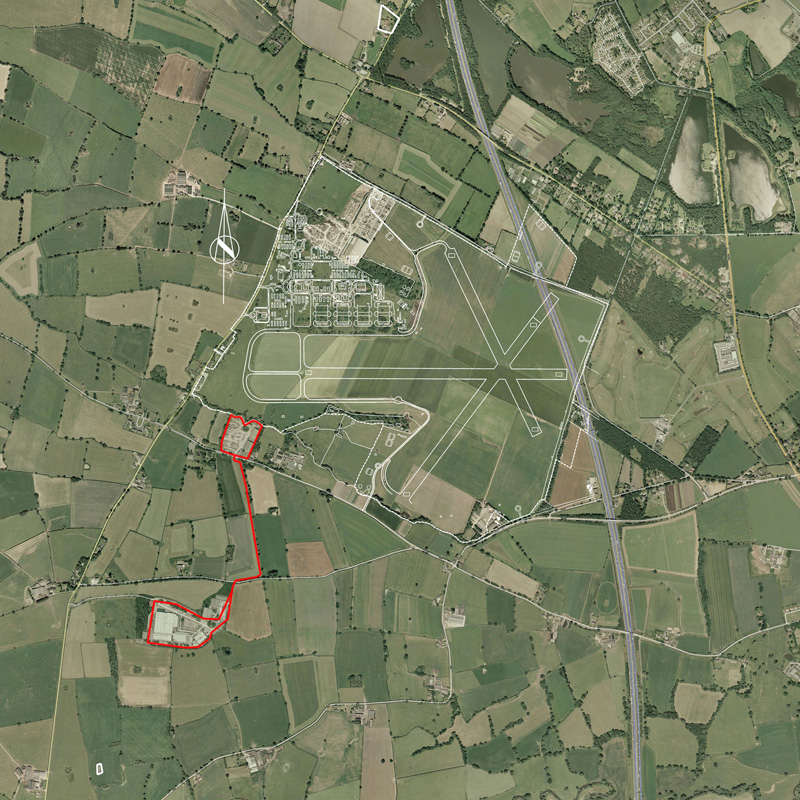


13th March 1941
It is possible that the aircraft seen at the top right-hand corner Hurricane or Defiant of No.96 Sqn.
The aircraft seen on the apron below the hangars are most likely those of No.2 S.o.A.N.
1945
This was the first year that the X’s appeared on the ends of the runways so that pilots knew they were no longer maintained, but they could be used in an emergency.
In the bottom left corner you can see the tow track running south from the finishing sheds towards the Vickers-Armstrongs factory.
24th March 1946
17th January 1947
20th April 1953
Much more of the surrounding area can be seen on this photograph and the Vickers-Armstrongs factory can now be clearly see in the bottom left hand corner.
The runways have once again been farmed.
17th March 1955
Most of the airfield can not be seen on this photograph, but at the top centre of the photograph you will see a few buildings opposite the dark, wooded area. It was here that the camp hospital was situated.
In reality it was more of a convalescence home, a large house with reasonable size gardens. The main RAF hospital for the area was at RAF Wilmslow.
2005
This image show the area around RAF Cranage in around 2005, before the E-on site took over the main area of the camp.
Top centre - the white outline shows the “hospital”. Note: Aside from the M6 motorway, the area opposite the "hospital" is now a mere, not woodland as the previous photograph.
Outlined in red is the tow track and the Vickers-Armstrongs factory
At the bottom left corner of the photograph is a small building outlined in white. This was part of the radar network.
<
>
All material on the web site is covered by copyright © 2010 - 2016